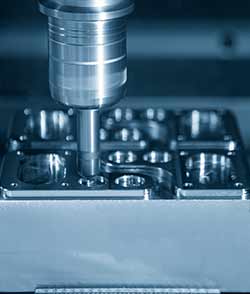What Is a Hydrostatic Rotary Table?
About Hydrostatic Rotary Table
Hydrostatic rotary tables, commonly referred to as hydrostatic turntables, are high-precision, high-stiffness machine tool accessories. Hydrostatic rotary tables integrate liquid hydrostatic bearing technology, cooling and sealing control technology, and variable frequency motor technology. They use a pressure oil film as the working medium, supporting and rotating the workpiece via the hydrostatic principle. This design endows the hydrostatic turntable with high load-bearing stiffness characteristics, no wear between friction pairs, and smooth and sensitive operation. Additionally, the error averaging effect of the support oil film provides the hydrostatic turntable with extremely high rotational and positioning accuracy.
Main Features of Hydrostatic Rotary Table
SEALION's large vertical lathes mainly use hydrostatic rotary tables, offering better performance and higher precision.
High Precision
Due to the adoption of liquid hydrostatic bearings and precise control systems, hydrostatic rotary tables achieve exceptionally high rotational and positioning accuracy, meeting the demands of precision machining.
High Load-bearing Stiffness
Liquid hydrostatic bearings possess high load-bearing stiffness, capable of withstanding significant loads without noticeable deformation, ensuring the stability and reliability of the table.
No Wear
he oil film lubrication between friction pairs prevents direct contact and wear, extending the equipment's service life.
Smooth Operation
The uniform distribution of the pressure oil film ensures smoother operation of the table, reducing vibration and noise.
Versatility
Hydrostatic rotary tables often integrate variable frequency motor technology, enabling the rotation and positioning of workpieces, thus expanding the machining range and flexibility of the machine tool.
Application Range of Hydrostatic Rotary Table
Hydrostatic rotary tables are widely used in various CNC machine tools, playing a crucial role, especially in high-precision component machining. They are commonly used in machining centers, lathes, grinders, and other machine tools as the fourth-axis for servo control. This allows for multi-axis linkage machining, enabling the processing of complex workpieces. Additionally, hydrostatic rotary tables are suitable for high-precision machining needs in the aerospace, automotive, optoelectronic, and mold industries.
Advantages of Hydrostatic Rotary Table
High efficiency, high speed, high precision.
Low vibration, low noise, low friction.
Strong load-bearing capacity, good stability.
-

Reduce Machine Tool Standby Time To Improve Equipment Energy Efficiency
Because of the increasing cost of energy, the energy consumption of machine tools has attracted more and more attention. By so far, the peripheral equipment and auxiliary facilities of the equipment ... -

The 16th China International Machine Tool Exhibition (Cimt2019) Was Held In Beijing
On April 15, 2019, the 16th China International Machine Tool Exhibition (cimt2019), sponsored by China Machine Tool Industry Association and co sponsored by China International Exhibition Center Group... -

What Machining Center is Good for Machining Box Parts?
The commonly processed box-type parts generally include the engine cylinder on the automobile, the transmission gearbox, and the transmission gearbox. The following pictures are all parts of the box t...





